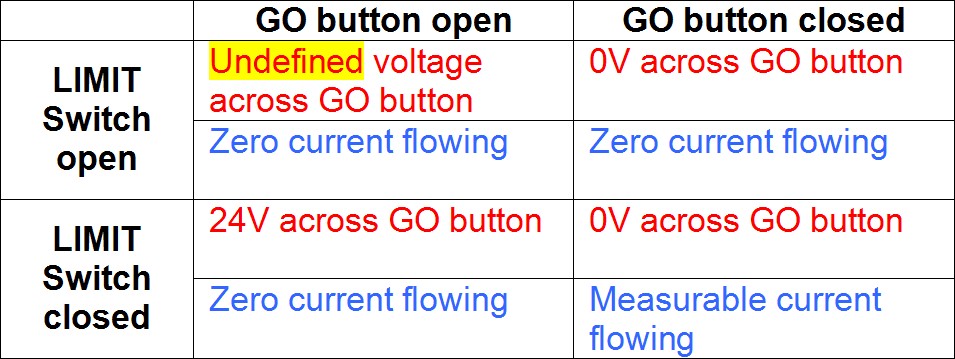Before we start getting into solutions, I thought it best to lay out the problem more clearly. Here is how I understand it...
Two switches having two states each generates four possible states of the system, having the following characteristics:

Here we can see three possible measurable quantities for the voltage across the GO button: 0V, 24V and Undefined - and if we
have 3 distinct values for this voltage, we can exactly determine the state of the switches when no current is flowing.
However, the undefined value causes a problem. It could
possibly be 0V or 24V, which extinguishes the certainty.
If, however, there could be some unique voltage across the GO button, then the certainty is reinstated. (I have chosen 12V - but it could be ANY voltage sufficiently different from the nominal 0V and 24V that it can be reliably distinguished from them.)
Inverting the table using observations to determine states produces this:

My solution would introduce a voltage across the GO button from a source of sufficiently high enough impedance that it has no measurable effect on the normal operation of the system, but not so high that the voltage detection mechanism cannot reliably detect it when both switches are open. There would also be a shunt resistor for detecting current flow.
How these quantities are then processed is open for discussion.